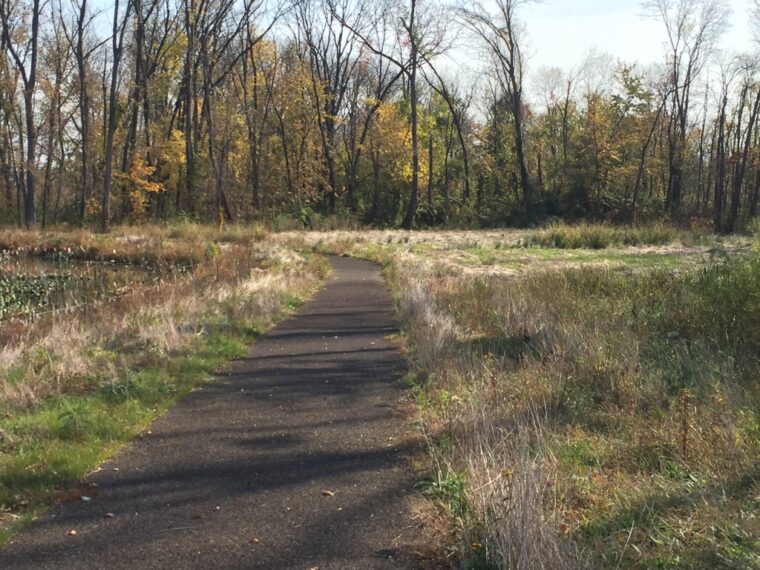
As urban areas grow, and developments are built closer to rivers and streams, the risk of flooding increases. Meanwhile, climate change is leading to more intense rainy seasons.
To address the challenge of flood mitigation, many cities across the United States are exploring permeable pavement to manage stormwater. Mandated by the 2021 Infrastructure Investment and Jobs Act, the Federal Highway Administration is also studying permeable pavement and its potential to protect against deadly floods.
Permeable pavement contains small pores on its surface that enable water to pass through, reducing runoff. As rainwater infiltrates the permeable surface, it slowly passes through a subsurface layer before filtering into the soil below. With conventional pavement, water runs off the surface into streams or storm drains that can easily become overwhelmed. Permeable pavement also helps improve water quality because less pollution from urban environments gets washed into rivers or soaks into groundwater.
Although it is still being researched, permeable pavement is not new. In Chicago, the Green Alley Program has been leading the way in permeable pavement adoption since its launch in 2001. The program has installed permeable pavement in more than 300 alleys across the city, with the goal of reducing stormwater runoff and improving water quality.
In the wake of Hurricane Sandy in 2012 New York City has also made strides in implementing permeable pavement projects. In 2023, the city completed a $16.6 million rebuild of Beach 108th Street in the Rockaway neighborhood of Queens. Using more than 11,000 square feet of permeable pavement slabs along the road curbs, stormwater will be more easily absorbed on the new roadway. The project also involved replacing and repairing storm drains and pipes.
“By including porous pavement in this reconstruction of Beach 108th Street, we are keeping more than a million gallons of stormwater out of the sewers each year which will reduce localized flooding and help protect the health of Jamaica Bay,” New York City’s Chief Climate Officer and Department of Environmental Protection Commissioner Rohit T. Aggarwala said in an announcement when the project was finished.
Within the past three to four years, permeable pavement has been installed in cities of all sizes, including Atlanta, Detroit, Milwaukee, Houston, Salt Lake City, San Diego and Tucson. Since the start of this decade, at least 18 cities have completed or are installing permeable pavement.
Porous Pave Inc., is a Michigan-based manufacturer of permeable pavement made from recycled tires. The company has been involved in several projects designed to mitigate flooding and improve water quality.
“Porous Pave is a permeable pavement made from 50 percent recycled truck tires, 50 percent stone aggregate chips, and a urethane binder that holds it together,” Connor Ouwinga, the company’s national sales manager, said in an interview with Government Market News. “The blend is mixed up in a mortar mixer and then poured in place, so you can pour it in any shape or size.”
The technology is most suited for walking paths or pedestrian plazas. Permeable pavement has been used for parking lots with mixed results, but the technology is not suited for vehicle travel, especially not high-speed roads, Ouwinga said.
Not all permeable pavement blends contain rubber. But a major challenge to expanding the role of permeable pavement is finding a pavement recipe that has large enough pores to effectively soak up water while providing the right amount of traction for vehicles. And even then, more research is necessary to improve the technology and reduce maintenance costs.
For local governments looking at the potential of permeable pavement, the Environmental Protection Agency has several programs that could support flood mitigation with an emphasis on water quality improvement. The EPA’s Clean Water State Revolving Fund provides low-interest loans for water quality improvement projects. The agency’s Nonpoint Source Management Program also offers grants for projects that reduce nonpoint source pollution, such as stormwater runoff.
The EPA also recently announced that $41 million in grant funding will be available for stormwater and sewer projects. The funding is dedicated to projects that will help manage stormwater runoff and improve water quality.
Photo courtesy of Porous Pave Inc.
The post Cities across U.S. installing permeable pavement for flood mitigation appeared first on Government Market News.
